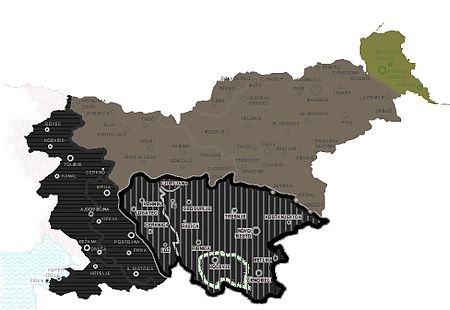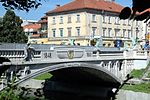Province of Ljubljana
1941 establishments in Europe1945 disestablishments in EuropeClient states of Fascist ItalyClient states of Nazi GermanyCorpus separatum ... and 7 more
Former countries in the BalkansFormer states and territories in SloveniaItaly–Yugoslavia relationsStates and territories disestablished in 1945States and territories established in 1941World War II occupied territoriesYugoslavia in World War II

The Province of Ljubljana (Italian: Provincia di Lubiana, Slovene: Ljubljanska pokrajina, German: Provinz Laibach) was the central-southern area of Slovenia. In 1941, it was annexed by the Kingdom of Italy, and after 1943 occupied by Nazi Germany. Created on May 3, 1941, it was abolished on May 9, 1945, when the Slovene Partisans and partisans from other parts of Yugoslavia liberated it from the Nazi Operational Zone of the Adriatic Littoral. Its administrative centre was Ljubljana.
Excerpt from the Wikipedia article Province of Ljubljana (License: CC BY-SA 3.0, Authors, Images).Province of Ljubljana
Čufarjeva ulica, Ljubljana Vodmat
Geographical coordinates (GPS) Address Nearby Places Show on map
Geographical coordinates (GPS)
| Latitude | Longitude |
|---|---|
| N 46.0556 ° | E 14.5083 ° |
Address
Čufarjeva ulica
1000 Ljubljana, Vodmat
Slovenia
Open on Google Maps









